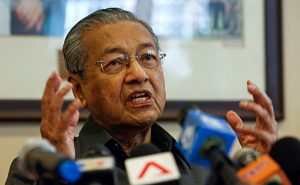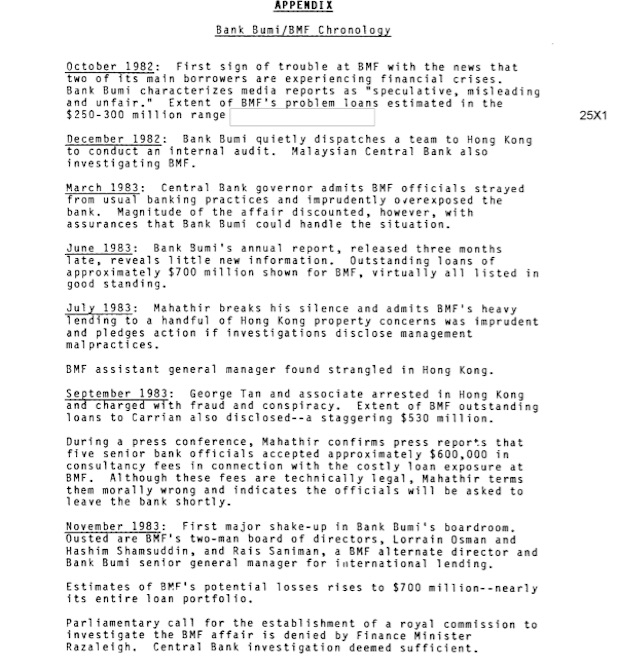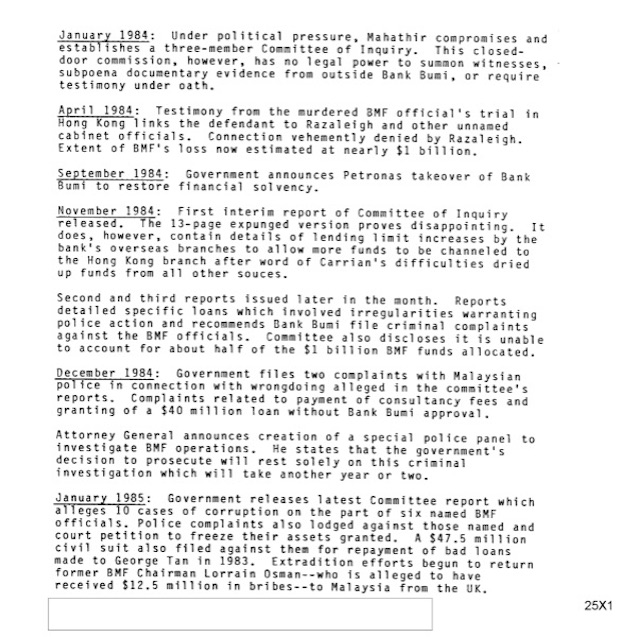BMF scandal ‘extended’ into Malaysian ex-PM Mahathir’s govt – CIA files

Despite his repeated denials, the CIA document produced in March 1985 said “circumstantial evidence” suggested that the scandal extends into the Mahathir administration. This was because as a government-owned banking institution, Bank Bumi was closely monitored buy the both the Finance Ministry and Central Bank.
(Asian Correspondent) – RECENTLY declassified documents by America’s Central Intelligence Agency (CIA) said the Malaysian government under longest-ruling Prime Minister Dr Mahathir Mohamad had a hand in the largest financial scandal the country had seen during the 1980s.
The CIA’s claim was revealed last week after its move to declassify more than 13 million documents, making them accessible online for public viewing.
During the first few years of Dr Mahathir’s tenure, Malaysia was ensnared in a massive graft debacle involving government-owned Bank Bumiputera (Bank Bumi), who’s reputation was tarnished by the “questionable” operations of its wholly-owned Hong Kong subsidiary Bumiputera Malaysia Finance Ltd. (B.M.F.).
Widely known as the BMF scandal, the Malaysian bank and its offshore subsidiary dished out billions in bad loans to numerous Hong Kong property speculators, including the Carrian Investment Limited (Carrian Group) between 1979 and 1983. The scandal also saw the brutal murder of a young Malaysian Bank Bumi auditor.
The BMF scandal has been described as an embarrassing episode in Dr Mahathir’s premiership, which dogged his leadership and saw hundreds of millions of dollars disappear into thin air following the defunct Carrian group and its former chief executive George Tan’s move to declare bankruptcy.
As BMF was heavily involved in providing loans to property speculators during Hong Kong’s property boom in the late ’70s, the CIA said BMF — unlike other banks in the the British colony — continued to extend credit to real estate despite concerns of a weakening market.


As a result, the Malaysian bank, which was initially set up to uplift impoverished Malaysians from the ethnic Malay community, had lost US$1 billion and prompted a delayed and wide scale probe into the scandal.
In the document entitled “The Bank Bumiputra Scandal: More Trouble Ahead for Malaysia’s Mahathir?”, the CIA said although Dr Mahathir had admitted BMF’s “imprudent” practices, the government’s response to the losses incurred was “surprisingly restrained”.
The agency said Dr Mahathir had downplayed the bank’s culpability while the government’s strategy to address the issue was to contain the problem while looking for a way to bail out the bank.
The 91-year-old former prime minister, who is currently a staunch critic of the present-day government embroiled in the on-going 1Malaysia Development Berhad (1MDB) scandal, has denied any involvement with the BMF fiasco.
“I don’t steal money. The money was missing and it is the bank’s money,” Dr Mahathir told local press in May 2015.
Unlike Prime Minister Najib Razak, who acted as an adviser to the strategic investment fund 1MDB, Dr Mahathir says he did not hold any position with Bank Bumi.
“I was not the manager of the bank, neither was I its adviser.”
Despite his repeated denials, the CIA document produced in March 1985 said “circumstantial evidence” suggested that the scandal extends into the Mahathir administration. This was because as a government-owned banking institution, Bank Bumi was closely monitored buy the both the Finance Ministry and Central Bank.
“No important decisions are made without their agreement or knowledge,” the document said.
“It is unlikely that the government was unaware of Bank Bumi’s increase on lending limits for its overseas branches to allow more funds to be channeled to Hong Kong.
“This action was taken after word of Tan’s difficulties had dried up funds from other sources,” it said.

